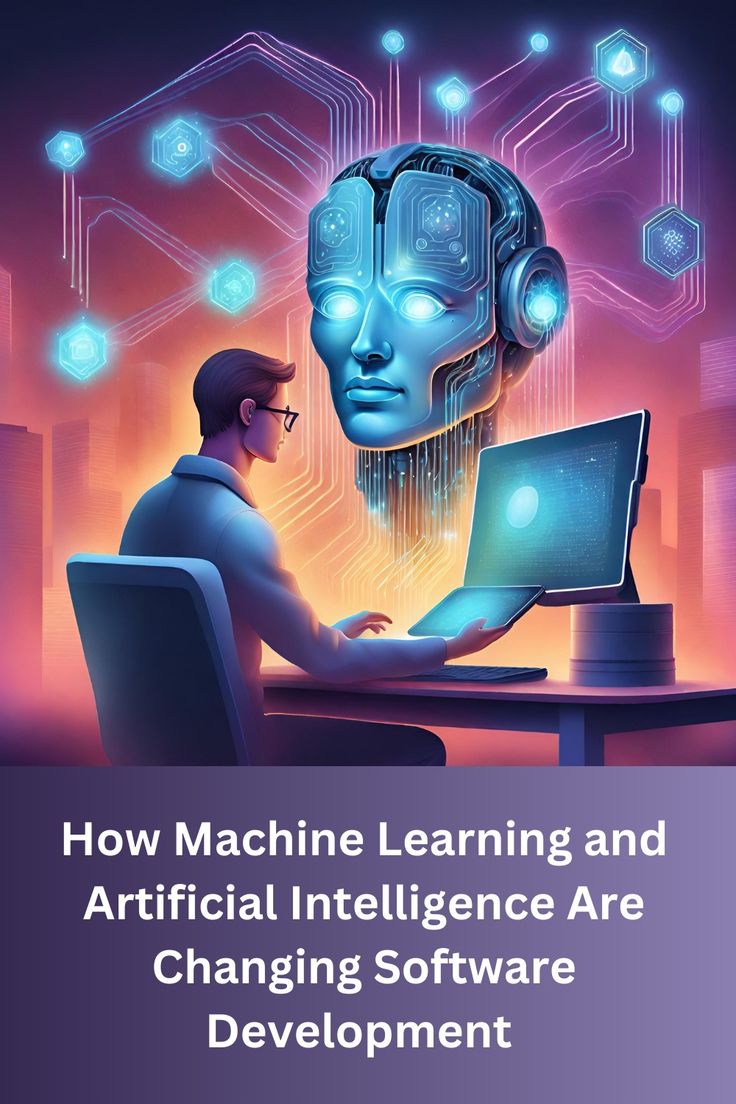Artificial Intelligence (AI) and Machine Learning (ML) in 2025: Shaping the Future of Innovation
Artificial Intelligence and Machine Learning: As we move further into the 21st century, Artificial Intelligence (AI) and Machine Learning (ML) have emerged as the cornerstones of technological evolution. In 2025, both AI and ML are no longer just abstract concepts or experimental technologies but have evolved into integral parts of everyday life, transforming industries, enhancing efficiency, and solving complex problems that were once unimaginable.
From healthcare and finance to autonomous vehicles and customer service, AI and ML are fundamentally changing the way we live, work, and interact. In this article, we will delve into the evolution of AI and ML, explore their current state in 2025, and examine their profound impact on various sectors.
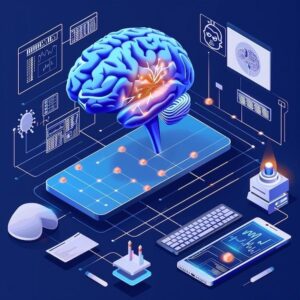
What is Artificial Intelligence (AI)?
Artificial Intelligence refers to the ability of machines and computers to perform tasks that would typically require human intelligence. These tasks include reasoning, problem-solving, learning, understanding natural language, and even creativity. AI systems are designed to mimic human cognitive functions and can improve over time through experience and data processing.
There are various types of AI, but they can generally be classified into three categories:
- Artificial Narrow Intelligence (ANI): AI systems that are designed to perform a specific task (e.g., voice assistants, recommendation systems).
- Artificial General Intelligence (AGI): AI that can perform any intellectual task that a human can do (this is still a theoretical concept and has not been achieved yet).
- Artificial Superintelligence (ASI): A level of intelligence that surpasses human capabilities (this is a speculative future concept).
What is Machine Learning (ML)?
Machine Learning, a subset of AI, focuses on the ability of machines to learn from data and improve their performance without explicit programming. In simpler terms, ML enables computers to identify patterns in data, make predictions, and improve outcomes based on experience.
There are three primary types of ML:
- Supervised Learning: The model is trained on labeled data, and the system learns to make predictions based on input-output pairs.
- Unsupervised Learning: The system finds hidden patterns or intrinsic structures in input data without labeled responses.
- Reinforcement Learning: The model learns by interacting with its environment, receiving feedback through rewards or penalties, and adjusting actions accordingly.
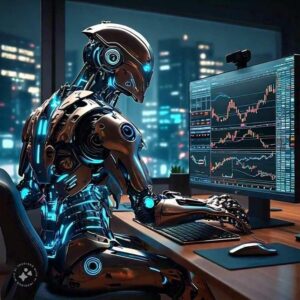
How AI and ML are Impacting Industries in 2025: Artificial Intelligence and Machine Learning
In 2025, AI and ML technologies are deeply embedded across various sectors, revolutionizing traditional methods and creating entirely new ways of solving problems. Let’s look at some of the most significant impacts these technologies are having:
1. Healthcare: Personalized Medicine and Diagnostics; Artificial Intelligence and Machine Learning
AI and ML are transforming healthcare by enabling personalized medicine, improving diagnostics, and enhancing treatment accuracy. In 2025, AI algorithms can analyze vast amounts of medical data, such as genetic information, medical records, and imaging, to provide tailored treatments for patients.
- Predictive Analytics: AI can predict disease outbreaks and identify at-risk patients based on their health data, allowing for earlier interventions and better management of chronic conditions.
- Medical Imaging and Diagnostics: AI-powered tools can analyze medical images, such as X-rays, MRIs, and CT scans, with incredible precision, often detecting conditions like cancer, heart disease, and neurological disorders earlier than traditional methods.
- Robotic Surgery: AI-powered robots are being used to assist in surgeries, offering greater precision, smaller incisions, and faster recovery times.
2. Autonomous Vehicles: Safer and Smarter Transportation; Artificial Intelligence and Machine Learning
AI and ML are the driving forces behind the development of autonomous vehicles. In 2025, self-driving cars, trucks, and drones are becoming a common sight on the roads and in the skies, powered by AI systems that can analyze traffic patterns, detect obstacles, and make real-time decisions to ensure safety.
- Self-Driving Cars: AI algorithms process data from sensors and cameras, enabling vehicles to navigate roads, avoid accidents, and follow traffic laws.
- Intelligent Traffic Management: AI is being used to optimize traffic flow, reduce congestion, and predict maintenance needs by analyzing data from traffic sensors and cameras.
- Drone Deliveries: ML-powered drones are now capable of autonomously delivering packages, offering faster and more efficient logistics solutions.
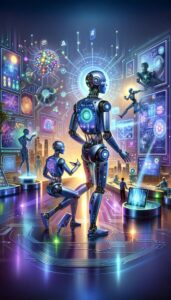
3. Financial Services: Fraud Detection and Investment Strategies; Artificial Intelligence and Machine Learning
The finance industry is one of the most significant sectors benefitting from AI and ML. In 2025, AI is being used for everything from fraud detection and risk assessment to automated trading and personalized financial advice.
- Fraud Detection: AI and ML algorithms can analyze transaction patterns in real-time, identifying unusual activities that may indicate fraud or financial crime.
- Robo-Advisors: AI-powered robo-advisors are helping individuals manage their investments by analyzing financial data and offering personalized recommendations.
- Algorithmic Trading: Machine learning models are being used to analyze market trends and make automated trades at high speeds, optimizing investment strategies.
4. Customer Service: Chatbots and Personalized Experiences; Artificial Intelligence and Machine Learning
AI-driven chatbots and virtual assistants have become the norm in customer service. In 2025, businesses use AI to offer personalized experiences, streamline operations, and enhance customer satisfaction.
- Customer Support Chatbots: AI-powered chatbots can handle a wide range of customer inquiries, provide personalized recommendations, and solve problems without human intervention.
- Sentiment Analysis: ML algorithms analyze customer feedback, reviews, and social media posts to understand public sentiment and improve products or services.
- Voice Assistants: Smart assistants like Siri, Alexa, and Google Assistant use AI to understand and respond to user commands, from managing schedules to controlling smart devices in the home.
5. Manufacturing and Automation: Smart Factories; Artificial Intelligence and Machine Learning
AI and ML are revolutionizing manufacturing by enabling smart factories where machines, robots, and systems work together to increase efficiency, reduce downtime, and improve quality control.
- Predictive Maintenance: ML algorithms analyze sensor data to predict when machines need maintenance, reducing downtime and maintenance costs.
- Robotic Process Automation: AI-powered robots are now capable of performing repetitive tasks with greater speed and accuracy, enhancing productivity and reducing the need for human labor in hazardous environments.
- Supply Chain Optimization: AI is helping businesses forecast demand, optimize inventory, and streamline logistics, making supply chains more efficient and cost-effective.
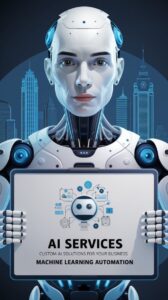
6. Marketing and Advertising: Targeted Campaigns and Consumer Insights; Artificial Intelligence and Machine Learning
In 2025, AI and ML have revolutionized digital marketing by enabling brands to create hyper-targeted advertising campaigns, improve consumer engagement, and gain deeper insights into consumer behavior.
- Personalized Advertising: AI algorithms analyze consumer data to deliver highly personalized advertisements tailored to individual preferences and behaviors.
- Customer Insights: ML is being used to analyze massive datasets to uncover trends, customer needs, and product performance, enabling businesses to make data-driven decisions.
- Dynamic Pricing: AI models analyze market trends and customer behavior to dynamically adjust prices, maximizing revenue and ensuring competitiveness.
7. Education: Adaptive Learning and Personalized Instruction; Artificial Intelligence and Machine Learning
AI and ML are making education more accessible and effective by enabling personalized learning experiences for students. In 2025, AI systems are being used to adapt content and delivery methods to match individual learning styles.
- Adaptive Learning Platforms: AI-powered platforms assess a student’s knowledge and learning pace, providing customized learning paths and resources.
- Automated Grading and Feedback: ML algorithms can automatically grade assignments, tests, and essays, providing timely feedback to students and freeing up teachers to focus on more critical tasks.
- Virtual Classrooms: AI is helping to create immersive, virtual learning environments that cater to a global audience, providing educational opportunities to underserved regions.
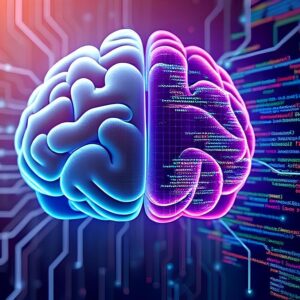
Challenges and Ethical Considerations: Artificial Intelligence and Machine Learning
Despite the many benefits of AI and ML, several challenges and ethical considerations must be addressed:
- Bias and Fairness: AI algorithms can inherit biases from training data, leading to discrimination or unfair outcomes. Ensuring fairness and transparency in AI systems is critical.
- Data Privacy: AI relies on large datasets, which raises concerns about the privacy and security of personal information.
- Job Displacement: Automation driven by AI and ML may lead to job displacement in certain industries, requiring retraining and reskilling of the workforce.
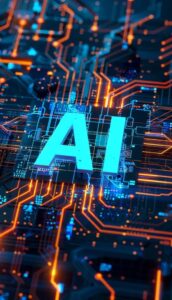
The Future of AI and ML: Artificial Intelligence and Machine Learning
Artificial Intelligence and Machine Learning: The future of AI and ML is incredibly promising. In the next decade, we can expect significant advances in AI-powered creativity, explainable AI, quantum computing integration, and autonomous decision-making systems. As AI continues to evolve, its ability to augment human intelligence and solve complex problems will become even more profound.
In 2025, AI and ML are at the forefront of a technological revolution, changing the way industries operate, and enhancing our everyday lives. As we continue to explore their full potential, AI and ML will be key drivers of progress, innovation, and societal advancement across the globe.
